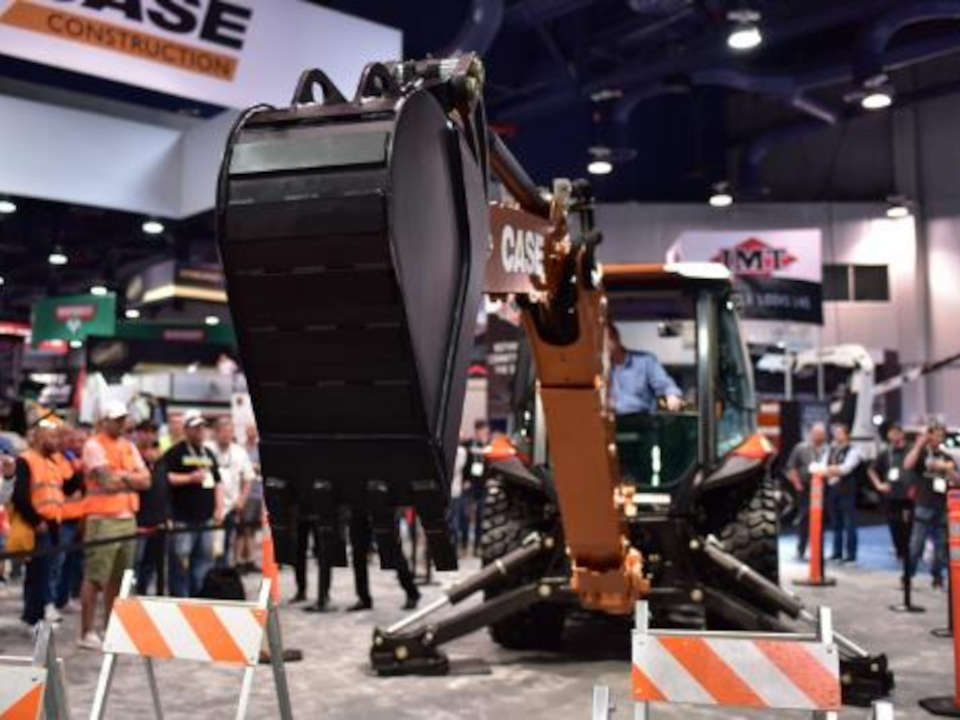News
Electric-Powered Construction Equipment: More Options Come to Market

Case Project Zeus Electric-powered vehicles (EVs) have made their way into just about every construction application. Once regulated to niche applications, such as non-mobile equipment, the smallest of compact excavators and large mining trucks, now every machine type is being equipped with electric power sources.
Case Project Zeus Electric-powered vehicles (EVs) have made their way into just about every construction application. Once regulated to niche applications, such as non-mobile equipment, the smallest of compact excavators and large mining trucks, now every machine type is being equipped with electric power sources.
More Electric-Powered Vehicle Options Than Ever
Cummins collaborated with XCMG to release a 3.2 metric ton electric compact excavator. This prototype is powered by Cummins BM5.7E battery modules, which provide 45kWh of power and is capable of working eight hours on a single charge. The machine made an appearance at CONEXPO-CON/AGG and is now in China, undergoing performance and customer tests.
Although small compact excavators have been available as EVs for a long time, this 3.5-ton-category machine is one of the largest, which demonstrates the ever-increasing ability of batteries to power larger equipment for longer periods of time.
Case Construction Equipment has developed their 580 EV backhoe. Nicknamed Project Zeus, the power and performance of the 580 EV is equivalent to other diesel-powered backhoes and the machine provides considerably lower daily operating costs. It is powered by a 480-volt, 90-kilowatt-hour lithium-ion battery pack that can last eight hours (depending on application).
“Our goal now is to further expand electrification and alternative propulsion into other product lines and markets that will also see the benefits from these advances related to sustainability and performance,” says Eric Zieser, director — global compact equipment product line, Case.
Bobcat says they believe electric technology has got to the point where it can sustain the construction industry. They have three electric loaders in production. The E17E prototype is an electric over hydraulic, lithium ion that uses hydraulics to power the boom arm. Their S70 uses an electric engine and drive but uses hydraulics to power the boom arm; it is the smallest skid steer loader in the Bobcat lineup. Their T76e has no fluids; it is fully electric. Inside the machine, there are no traditional mechanics. This machine is a concept machine and is not being marketed.
Electric Power for On-Road and Off-Road Equipment
Manufacturers have been experimenting with electrification of trucks for a long time. Shunt trucks was the first truck category to get “electrified” because they only travel short distances. Now, manufacturers are experimenting with long haul and work trucks.
Zoomlion has released the world’s first electric-powered truck crane—the ZTC250N-EV. The 25-ton pure electric-powered truck crane can reach a maximum speed of 56 mph and a maximum gradeability of 50 percent, while reducing energy costs by 35 percent, says the company.
Liebherr offers two types of truck mixers (ETMs) in its portfolio that feature electrical drum drives. Since these trucks travel through and work in highly populated areas, its ability to decrease emissions (compared to a diesel-powered truck) becomes even more important because it doesn’t contribute to high CO2 levels along major city streets with lots of pedestrians.
Liebherr says these new machines impressively handled very thick concrete consistencies and demonstrated full performance at all times during winter operation due to their optimized thermal management for the batteries and that battery life lasts the full day when in standard operation.
Besides having a battery that lasts a long time, it is important to have one that can be charged quickly. Developed in cooperation with JLG, the Deutz 360 Volt developed by has developed a battery that can be charged to 80 percent capacity in under four hours. That battery powers two 40-kW electric motors. One for driving and one for operating the arm. This system is available on the JLG G5-18A telescopic handler.
“Our approach builds on intelligent combinations of electric drives and internal combustion engines that offer the potential to be operated in a carbon-neutral manner,” says Dr. Frank Hiller, Chairman of the Board of Management of Deutz AG.
The means of charging is also important. Envision Solar showed at CONEXPO-CON/AGG the EV ARC 2020 off-grid solar-powered EV charging infrastructure solution that is portable and doesn’t require digging to install a utility or fuel delivery service. Up to two machines can be powered at one time, either through the use of a plug or wirelessly.
The Benefits of Electric Engines
Manufacturers are designing electric engines that offer benefits of both electric power and diesel power by creating electric engines that can match power outputs of diesel engines without its drawbacks. Another benefit of EVs is their ability to provide instantaneous torque and peak torque at every operating speed, whereas diesel engines on idle must ramp up the engine before having sufficient power to lift a load.
Most new EVs are electric versions of diesel ones, and both options are commercially available, but there may be a time when there is no diesel option for certain machine categories.
Volvo Construction Equipment, for example, offers several electric compact excavators and has stated that they will cease production of their diesel counterparts.
Join over 40,000 industry peers who receive construction industry news and trends each week. Subscribe to CONEXPO-CON/AGG 365.



